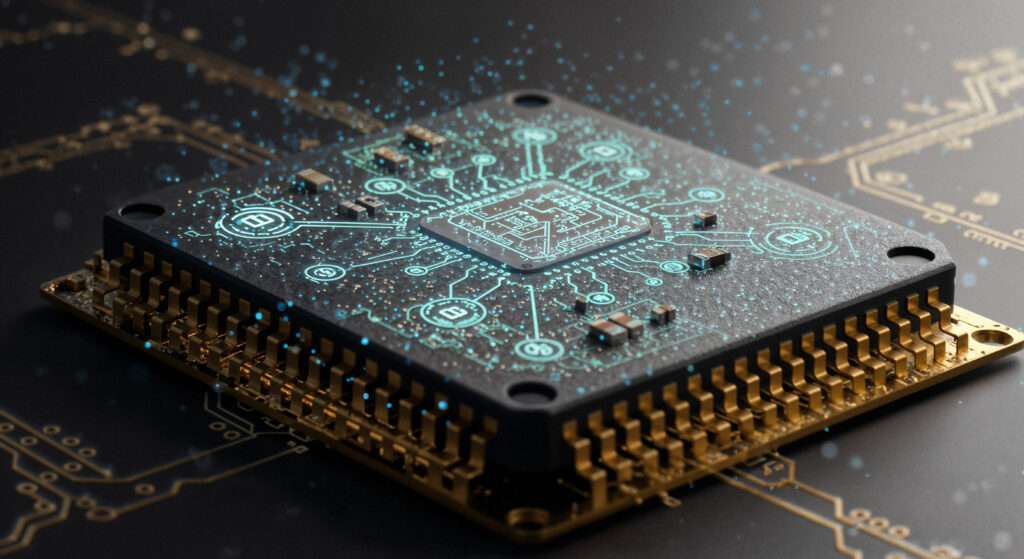Should your model run on the device or in the cloud? This guide compares latency, reliability, privacy/compliance, and total cost—so you can pick the right architecture for your actual jobs, not just the benchmarks.

At a high level, on-device AI vs cloud AI is a tradeoff between doing the math where the data is born and sending it to large, flexible compute. On-device gives instant response and stronger data locality; cloud gives scale, elasticity, and easy updates.
Plain-English Difference
On-device AI: models run on phones, cameras, cars, wearables, or factory controllers. Cloud AI: data or features are sent to a service for inference. Your decision in on-device AI vs cloud AI usually hinges on latency targets, connectivity realities, privacy rules, and your cost model.
Where Each One Wins (Use-Case Map)
On-Device Wins
- Instant decisions: safety (driver assistance), tap-to-translate, wake word—on-device AI vs cloud AI leans device when milliseconds matter.
- Spotty or expensive networks: remote sites, ships, underground, or metered links.
- Privacy by locality: faces, health signals, or proprietary sensor data that should never leave the device.
Cloud Wins
- Heavy models and bursty load: large LLMs, multimodal models, or analytics spikes—on-device AI vs cloud AI tilts cloud for elasticity.
- Centralized oversight: one update deploys everywhere; easier A/B tests and observability.
- Cross-device aggregation: learning that needs many streams combined (with proper consent).

Latency & Reliability (What Users Actually Feel)
For on-device AI vs cloud AI, start with your SLOs. If a decision must land in <50 ms predictably, on-device is safer—no round-trip, no cell handoffs. If 300–800 ms is acceptable and you have stable links, cloud is fine and may be cheaper per inference.
- Tail latency beats average: Plan for the worst minute of the day, not the median.
- Hybrid buffering: Cache results and queue requests gracefully when the network dips.
- Edge accelerators: NPUs, GPUs, and DSPs bring “cloud-like” speed to devices for specific models.
Privacy, Security & Compliance (Data Gravity Wins)
Privacy laws and contracts often decide on-device AI vs cloud AI before engineering does. Keeping raw data local reduces exposure; regulated domains may require “process at source, transmit minimal features.”
- Minimize data: keep only what you need, drop or hash identifiers early.
- Federated learning: train at the edge, send gradients not raw data.
- Security basics: hardware-backed keys, encrypted storage, signed model updates, and zero-trust APIs.
Cost & TCO (Not Just GPU Prices)
Budgeting on-device AI vs cloud AI means comparing more than per-inference fees. Consider model size, update cadence, device BOM (with NPUs), data egress, and ops headcount.
| Cost driver | On-Device AI | Cloud AI |
|---|---|---|
| Inference cost | Zero per call, but device silicon costs more | Pay per call / token; great for bursts |
| Updates | Over-the-air bundles per fleet | One deploy for all clients |
| Connectivity | Works offline; sync later | Requires stable links; egress fees possible |
| Observability | Local logs, sampled telemetry | Central dashboards & A/B testing |
| Privacy exposure | Low (data stays local) | Higher (must protect in transit/at rest) |
Architecture Patterns That Work
Hybrid Inference
Most teams land in the middle for on-device AI vs cloud AI: small/fast models on-device for instant UX, with cloud fallbacks for complex queries or when confidence is low.
Federated Learning
Keep training data on devices and share updates, not raw records—useful when on-device AI vs cloud AI choices are driven by privacy or bandwidth.
Feature Streaming
Extract features on edge devices and send compact vectors for cloud scoring. In on-device AI vs cloud AI comparisons, this cuts latency and cost while keeping raw inputs private.

Benchmarks That Actually Matter
- End-to-end latency: what the user feels in on-device AI vs cloud AI trials.
- Tail performance (p95/p99): worst-case minutes decide satisfaction.
- Energy & thermals: device comfort and battery life vs cloud egress & compute cost.
- Update friction: time to patch a model, roll back, and observe impact.
- Privacy posture: data retained, identifiers removed, auditability.
Buyer Checklist (Copy/Paste)
- Latency target: set a hard SLO before debating on-device AI vs cloud AI.
- Privacy & residency: define what must never leave the device.
- Model size & upgrades: can devices handle current + next model?
- Offline mode: define what still works with zero connectivity.
- Observability: metrics, crash logs, shadow testing, A/B.
- Cost model: device BOM vs per-call fees; run 12-month TCO.
Putting It Together
The pragmatic answer to on-device AI vs cloud AI is “both.” Run what must be instant and private locally; send complex or cross-device tasks to the cloud. Measure real latency, privacy exposure, and cost—not just model accuracy—and you’ll ship the right mix.
Related Guides on Bulktrends
- Small Business Cybersecurity: 12 Proven Moves
- 5G vs Wi-Fi 6: Pick the Right Network
- AI Ethics: Principles to Build Trust
- Quantum Computing for Business
Authoritative External Resources (dofollow)
- Wikipedia — Edge Computing
- Wikipedia — Cloud Computing
- Wikipedia — Federated Learning
- Wikipedia — Differential Privacy
Disclaimer: Capabilities vary by device silicon, radio conditions, and model size. Always validate with a small pilot and real SLOs before scaling.






